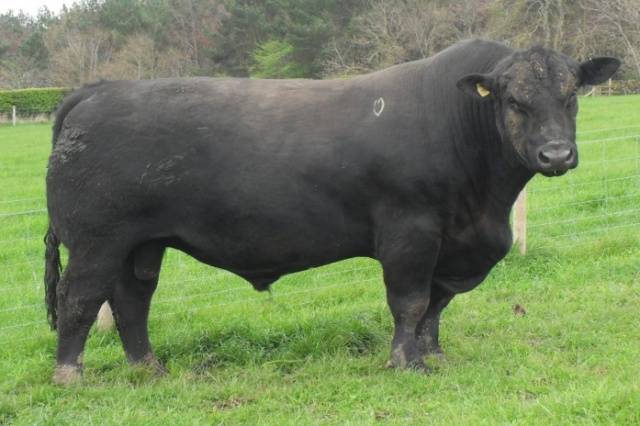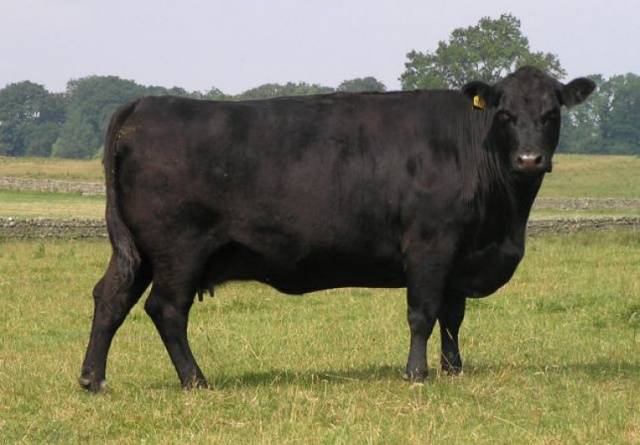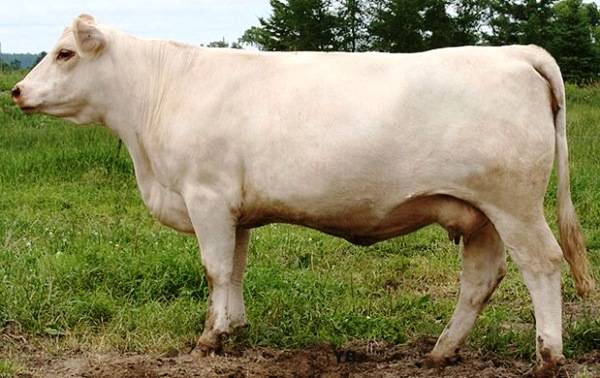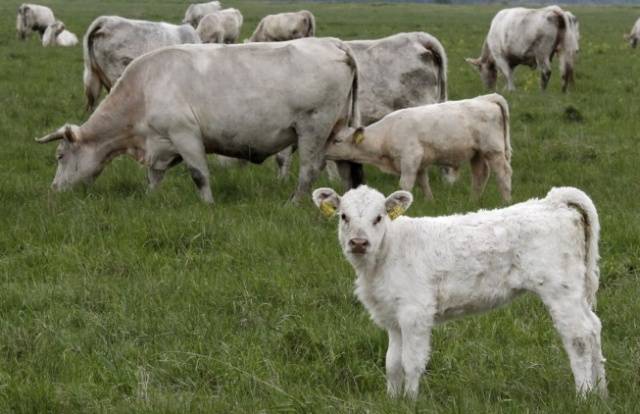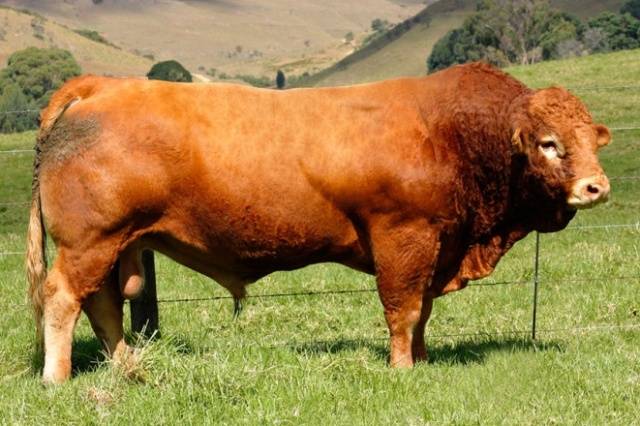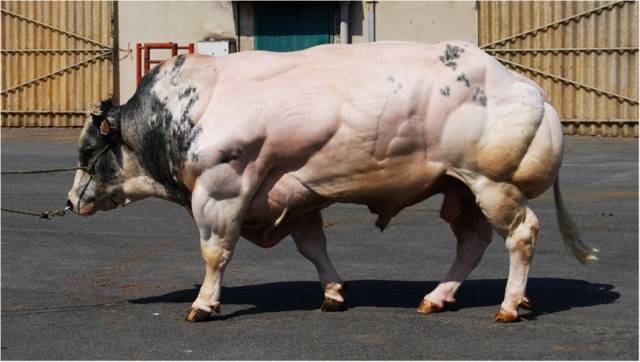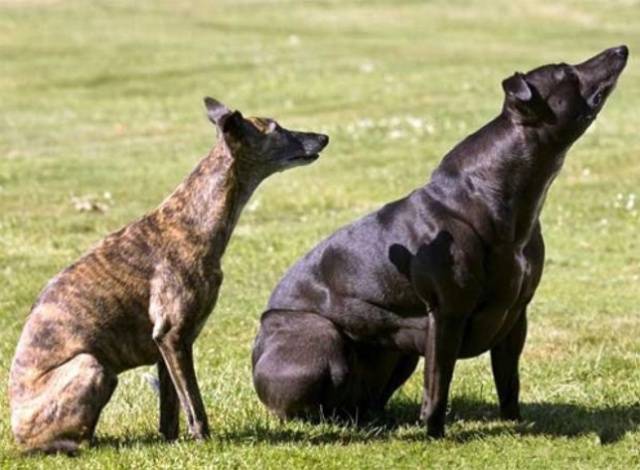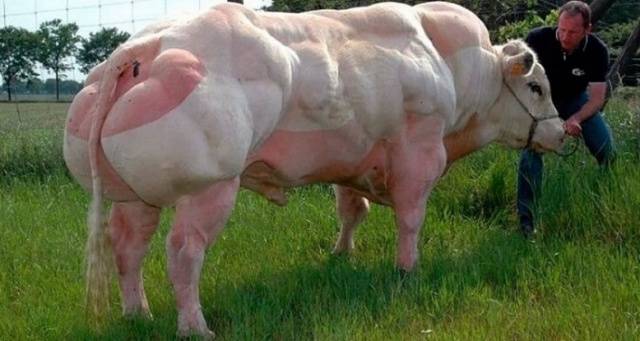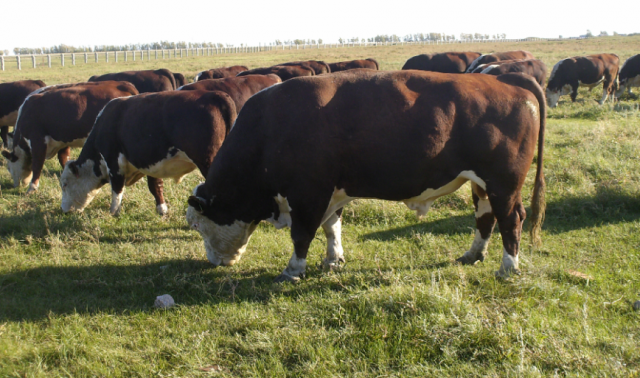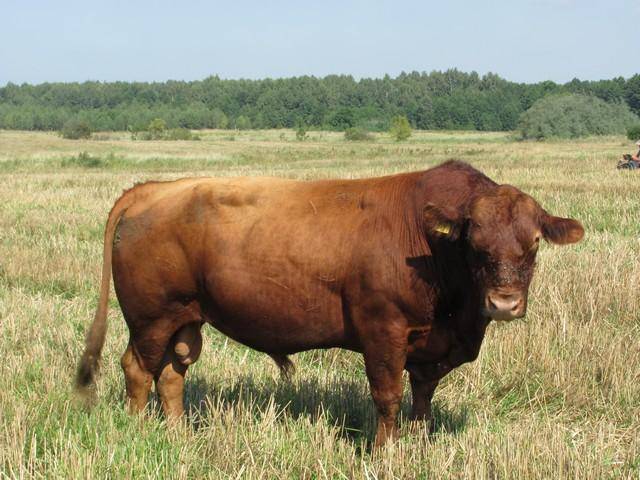Content
In private farmsteads, you rarely find cattle of the meat direction, which were bought for the purpose of breeding. More often they buy bulls for fattening. Most often these are animals of the same breeds that are bred at the nearest dairy farm. If the farm is focused on milk production, it is more profitable for the owner to sell the calves without distracting staff to care for the small calves. Therefore, even for fattening, the owners of private farmsteads take dairy animals.
Specialized beef breeds of cows have a number of advantages: they grow quickly, give a large slaughter yield of meat from a carcass, the quality of their meat is better than that of dairy cows. But to maintain a breeding herd, you need to have a whole farm. And the second for raising young animals for meat.
General characteristics
Cattle beef animals look like powerful muscular animals. Their weight is greater than that of dairy cattle, but the skeleton is quite graceful. Muscles give them the impression of very large massive animals. General standard for beef cows:
- small head;
- short powerful neck;
- well developed withers;
- long body;
- wide, straight back;
- wide loin;
- raised sacrum;
- tail set high;
- wide round chest;
- well-developed dewlap;
- short legs.
The structure of meat animals is such that the amount of waste is as small as possible. Therefore, due to the short legs (unnecessary tubular bones of the metacarpus and metatarsus), the beef cattle breeds do not differ in impressive growth like the Holstein dairy, but their weight is much higher.
Beef cows only produce milk for calves and therefore their udders are very small, albeit regular in shape.
Beef farming originated in England in the 18th century. It was then that cattle breeds that were actively gaining muscle mass were purposefully bred. Until today, the best beef cattle breeds trace their ancestry from the cattle of the United Kingdom. Not only the UK has tried to breed beef cattle, but the most popular beef cattle breeds in the world are Hereford and Aberdeen Angus. Both are from the islands.
Hereford
Due to its high adaptation to different climatic conditions, it is today distributed throughout the world, including Australia and South Africa. These are massive animals, already divided into three types:
- red horned;
- hornless red;
- the black.
Meat producers prefer rumped cattle as they are easier to work with. Because of this, the original horned Hereford is a thing of the past.
Black Hereford arose due to the addition of the blood of the Aberdeen-Angus or Holstein breeds to the red cattle.
This is an industrial cross, which gives an increased meat yield in the first generation. If you continue backcrossing, you can get a black Hereford. This is how it was received. The black type is slightly larger than the red, which is why industrialists prefer it. Besides, he is also hornless.
The weight of the Herefords ranges from 900-1200 kg, cows weigh up to 850 kg. The lethal output from the carcass reaches 62%.
Aberdeen Angus
A native Scottish breed of cattle. They have good adaptive abilities and can live even in the northern regions. They are characterized by very rapid development. Bulls reach 1 ton of weight, cows are medium-sized, weighing an average of 550 kg.Aberdeen-Angus cattle breed for beef direction and their external characteristics are more reminiscent of dairy cattle. They have thin, loose skin, graceful bones. The structure of the queens is more similar to the dairy cow, which is not milked and fattened for slaughter. The only thing that indicates their meat purpose is a well-developed dewlap.
These two English breeds compete with two French breeds.
Charolais
A very old French breed originally intended to be yoked. Draft animals for the transport of heavy loads must have significant muscle mass. This feature is entrenched in the Charolese cattle. Later, the ability to gain muscle, rather than adipose tissue, made the Charolais one of the most sought-after meat breeds. The modern weight of adult Charolese bulls is 1.1 tons, cows - 0.9 tons.
Therefore, Charolese cows do not look muscular, unlike bulls, which have been selected for the quality of muscle mass for the past 100 years. The Charolese meat breed of cows brought to Russia is generally more reminiscent of an ordinary Russian cow. Including fatness. However, nothing surprising. Where will the energy and muscles come from if you drive cattle 20 km at the speed of a trotting horse, that is, 20 km Charolais queens with calves should, according to the shepherds, overcome in 2 hours.
A serious disadvantage of Charolais is heavy calving, which is why it cannot be recommended for breeding in private farms. Trouble-free childbirth in animals is one of the main conditions for breeding livestock. Only at first glance it seems that it is not at all difficult to spend several days a year near a giving birth animal. In fact, caring for the cattle is very exhausting and the best option for the owner - “I came in the morning and was glad, looking at the newborn”, the rest was done by the uterus. This approach does not work for Charolais.
Limousin
It got its name from the French province of Limousin, in which it was bred. Bulls have pronounced features of the beef breed. Cows are more graceful. The weight of bulls is 1100 kg, cows are 600 kg with a small animal height of about 125-130 cm.
Limousines steadfastly convey their characteristics when crossed with other breeds. These are animals with thin, strong bones and a significant amount of muscles. They are distinguished by good health. Suitable for the Russian climate, as it can withstand frosts up to 30 degrees, provided there is plenty of roughage.
Limousines are distinguished by easy, problem-free calving and a high calf yield: up to 95%. The problem-free calving is explained by the fact that the calves are born large (32-34 kg), but not wide.
This is one of the "old" beef cattle breeds bred in Russia. It has been bred in Central Russia since 1961. Livestock is unpretentious to feed and is well suited for keeping in a private backyard.
Analyzing what kind of beef cattle breeds are, one cannot fail to mention the Belgian blue.
Belgian
This best beef breed of cows came about by accident. In the genotype of ordinary cattle, as a result of the mutation, the gene responsible for limiting the growth of muscle mass has been “broken”. No genetic engineering was used. A similar phenomenon exists in dogs.
Both dogs are whippets, but the black one lacks a gene that limits muscle building.
Exactly the same mutation occurred with the Belgian cattle. But if Whippet Wendy is rejected from breeding, then the opposite happened with cattle. The breeders seized on such a great opportunity and perpetuated the mutation.
Photos of the Belgian beef cattle breed are impressive.
The question arises as to how these livestock can reproduce. But in animal husbandry, only artificial insemination has been practiced for a long time. The queens of this breed are not able to calve on their own and they undergo a cesarean section.One uterus can withstand 6-10 operations.
These bulls require special conditions for keeping. They cannot gain weight on pastures like normal. They are kept in boxes with access to a small enclosure.
But the advantage of this breed is in its low-fat dietary meat. Living organisms are designed in such a way that it is more profitable for them to store fat than to build muscle. In the case of a “broken” gene, the body, on the contrary, “refuses” to accumulate fat, “giving preference” to muscles.
But it is unlikely that Belgian cattle will ever appear in private farmsteads due to the difficulties with breeding.
Soviet breeds
They did not breed beef cattle in Russia. All domestic beef breeds date back to the times of the Soviet Union and, in fact, are a cross between local national breeds with foreign beef cattle.
Beef cattle in Russia are mainly represented by Kazakh white-headed a breed derived from the Herefords.
Kazakh white-headed
This unpretentious breed weighs less than its ancestor Hereford. Kazakh white-headed bulls weigh up to 850 kg, cows - 500. But Kazakh cattle are able to survive and gain weight where no European breed can survive. Livestock is adapted not only to a poor diet, but also to wintering in cold steppes. From a household point of view, the Kazakh white-headed cattle is more profitable than other beef cattle, since it does not require special care, and its fertility is 96%.
Breeding work is underway on the breed in order to improve its milk productivity. There are already two lines today. If the milk yield of a purely meat line is 1-1.5 tons of milk per lactation, then the milk line is capable of producing 2.5 tons of milk. In the case of buying a dairy line Kazakh white-headed, the owner will be able not only to provide himself with meat, but also to get some milk for daily needs.
If Kazakh cattle for some reason do not suit you, you can consider Ukrainian meat breeds.
Ukrainian meat
The main composition of parental breeds is foreign by three quarters. In the breeding of the Ukrainian beef cattle, Sharolese, Simmentals and Kianske dogs took part. Of the local there were only gray Ukrainian cattle.
Livestock is unpretentious in terms of keeping and is able to get by with pasture. True, these animals eat almost any plant, which poses a danger to fruit crops.
The animals are tall. Bulls can reach 150 cm at the withers and weigh 1.2 tons. Cows grow up to 130 cm and weigh 550 kg. Their meat yield is above average: 50-64%. But the main advantage of this breed is its thick skin, which is used to make leather shoes and other household items. The downside is that the breed is relatively new. Approved in 1993. Although the total number of livestock today reaches 10 thousand, few have heard of it and even fewer have seen it.
Volynskaya
Another Ukrainian breed is almost the same age as the previous one. Difference between Volyn and Ukrainian meat year. Volynskaya was bred in 1994. But the genetic base used to breed this cattle is slightly different:
- limousine;
- Aberdeen Angus;
- hereford;
- Polish red;
- black and white.
The result was a red suit of all shades: from cherry to light red.
The average weight of bulls is 1 ton, of cows - 500-550 kg. The lethal output from the carcass is higher than that of the Ukrainian meat and ranges from 60 to 66%.
Animals of strong constitution with powerful bones uncharacteristic for beef cattle. The head is small, the neck is short and powerful. The withers and dewlap are well developed. The body is shorter than that of other beef breeds, wide at the back, with a round chest. Also, unlike other beef cattle, the muscles are not very prominent under the skin. Although the skin of Volynskaya meat is of medium thickness.
Conclusion
Before choosing a beef breed of cows for a courtyard, it is better to familiarize yourself with the photo and description of the livestock, since not all of them are docile and will be safe for the owner.


